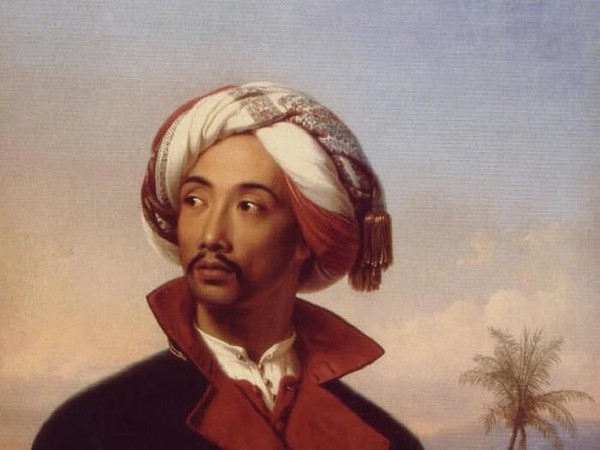
Robert Draws – Raden Saleh was a renowned Indonesian painter, known for his masterpiece “The Capture of Prince Diponegoro.” He lived during the Dutch colonial period and was a pioneer of modern art in Indonesia. His works were influenced by European Romanticism, blending it with his Javanese heritage. Raden Saleh’s exceptional skill earned him the title of “The Royal Painter,” marking his legacy in the world of art.
Raden Saleh was born in Terbaya, Semarang, Central Java, as Raden Saleh Syarif Bustaman. The exact year of his birth is unclear, with some sources citing 1807, 1809, or 1811. His father, Sayyid Hoesen, was of Arab descent, and his mother, Mas Adjeng Zarip Hoesen, was Javanese. His uncle was the regent of Semarang, and this connection introduced Raden Saleh to the Dutch authorities at an early age.
Raden Saleh demonstrated artistic talent as a child. By the age of 12 or 15, his painting skills caught the attention of Belgian artist A.A.J. Payen. Payen was in Indonesia to assist Professor Reinwardt, the founder of Bogor Botanical Gardens. Raden Saleh’s impressive talent led Payen to take him under his wing. Under Payen’s guidance, Raden Saleh learned oil painting and European artistic styles.
“Read about: Indonesian Artists Showcase Masterpieces at KSBN’s 2025 Cultural Art Event”
In 1829, Raden Saleh sailed to the Netherlands to further his education in art. Initially, he did not intend to stay long, but eventually, he decided to remain in Europe. Thanks to recommendations from Payen and support from Dutch officials, Raden Saleh received a scholarship of 2,000 guilders. During his studies in the Netherlands, he worked under the guidance of famous Dutch artists, including Cornelis Kruseman and Andreas Schelfhout.
Raden Saleh’s time in Europe allowed him to perfect his skills and expand his artistic horizons. He also developed a deep appreciation for European Romanticism, which was reflected in his later works. His time in Europe made him a pioneer for future Indonesian students who would follow his path.
Raden Saleh’s reputation as a talented artist grew over time. He gained recognition in Europe and was awarded several prestigious honors. In 1844, he received the Order of the Oak Crown from King Willem II of the Netherlands. This recognition led to his appointment as the royal painter by King Willem III.
During his time in Europe, Raden Saleh also had the opportunity to meet King Louis Philippe of France and explore various parts of Europe, including Italy and Algeria. These experiences had a profound impact on his artwork.
“Read more: El Valle Grita: Community Culture, Festival Events and Musical Arts”
Raden Saleh returned to Java in 1851 after years of studying and working in Europe. He continued to be a respected artist, though the colonial government remained wary of his influence. In 1868, he faced accusations of involvement in a rebellion, but no evidence was found. His later years were marked by continued artistic success and recognition.
Raden Saleh’s work reflected the Romanticism popular in Europe during the early 19th century. His paintings often depicted grandeur and brutality, exploring themes of human desire, freedom, and the complexities of fate. One of his most famous paintings, “The Capture of Prince Diponegoro,” Raden Saleh completed in 1857 and still celebrates today. Raden Saleh’s legacy continues in Indonesia, where people consider him a pioneer of modern Indonesian art. His contributions to the world of art and his status as a royal painter have secured his place in history as one of the nation’s most celebrated artists.